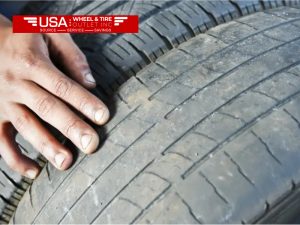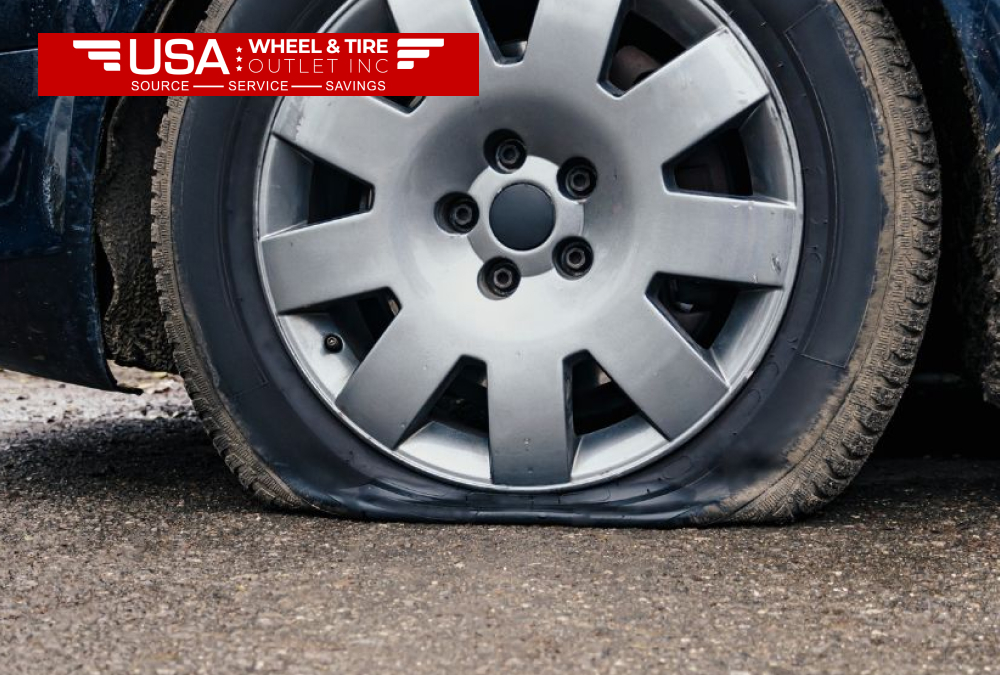A tire blowouts is terrifying that often occurs at the most inconvenient occasions. If you know the reasons behind why a tire is likely to fail and how to prevent it, you can make the necessary steps to limit your risk while driving. This guide outlines the most common causes for blowouts, and offers guidelines for prevention that will improve safety on the road and keep your tires energetically.
What Causes a Tire to Blow Out?
Tire blowouts can be the result of a variety of causes, usually relating to inadequate maintenance of tires or driving conditions that can be challenging. Here are the most frequent reasons why tires fail:
1. Under-Inflation
One of the main reason for blowouts in tires is a lack of air pressure. When a tire is inflated too low the sidewalls stretch more, which causes friction and the formation of heat. The added stress weakens the tire’s structure, which makes it more prone to break.

Prevention Tips: Check regularly your tire’s pressure, making sure to be in line with the manufacturer’s guidelines. Utilizing a digital gauge will focus on providing precise data, helping you avoid issues with under-inflation.
2. Overloading
The burden that a tire is a important reason for blowouts. Each tire has its own capacity for carrying loads, and if it exceeds it adds pressure to the rubber, thereby increasing the likelihood of failure.
Prevention Tips: Make sure you follow your vehicle’s weight limit. Go through the owner’s manual or the placard in the doorway to the driver’s side to determine the weight capacity that is recommended for your vehicle.
3. Damage to the Impact from Road Hazards
A collision with potholes, curbs or any other road obstacle could cause damage to the tires’ structure and could result in an outburst. Sharp objects such as glass or nails can cause punctures to the tire, which could compromise its strength.
Prevention Tips: Do defensive driving to stay clear of dangers that can be posed by roads when it is it is possible. Regularly check your tires for tears or punctures particularly if you regularly travel on roads that are rough.
4. High Speeds in Hot Weather
Speedy driving in hot temperatures can cause extra pressure on the tires. The heat causes the air in tire to improve in volume, and this could cause more damage to existing issues and cause an air leak.
Prevention Tips: Avoid driving at a high speed particularly on hot days. A steady speed as well as with Cruise control while driving the highways will reduce wear and tear.
5. Worn-Out Treads
Tire tread wear can affect the tire’s grip and traction. The thinner tread can rise the chance of a blowout because there’s less rubber that can absorb shocks from the road. Tires that have worn treads are more prone to punctures as well as other damages.

Prevention Tips: Make sure you regularly measure the tread depth of your tires together the tread depth gauge, or a penny test. Replace any tires that are worn to a depth that is less than the recommended for your car type.
6. Tire Age
Even the tires appear to be in good shape but aging can cause blowouts. As time passes the rubber begins to degrade which weakens the tire’s structure. The rule of thumb is that tires need to be replaced every one to six years, regardless appearance.
Prevention Tips: You can determine your tire’s condition by examining the code DOT on your sidewall that includes the year and week of its manufacture. Replace old tires, regardless of whether they look good.
Prevention: Practical Tire Maintenance Tips
A proper maintenance of your tires is crucial to avoid blowouts and ensure safe driving. Here are some important suggestions for maintaining your tires in good condition:
Regular Tire Pressure Checks
Get a reliable tire gauge and test your tire pressure every month. In cold weather, tires can lose pressure, whereas hot weather could rise this, and you should make adjustments according to the conditions in order to keep your tire pressure at optimum.
Rotate and Balance Tires
Rotating your tires distributes wear evenly, thus extending their life and reducing the risk of blowouts. Try for a rotation of your tire once every 7500 to 5,000 miles. Also, take into consideration balancing them throughout the rotation to assure an easy journey.
Inspect Treads and Sidewalls
Check your tire for any indications of bulges, wear, or cracks. Uneven wear could be a sign of alignment issues, which could boost the chance of blowouts. Therefore, you should take care to address any irregular wear patterns to an experienced mechanic as soon as you notice it.
Avoid Overloading Your Vehicle
The extra load you put on your vehicle places additional pressure on the tires increasing the chance of a blowout. Be aware of the capacity of your vehicle’s load and follow it.
Monitor Tire Age and Replace as Needed
The average lifespan of tires is of between six and ten years, based on usage and exposure to the elements. Even if the tire appears to be in good condition be sure to replace it when it’s nearing ten years since the date of manufacture to assure security.
Conclusion
Knowing the causes that lead to tire bursts is vital for preventing blowouts. By ensuring regular maintenance on your tires, observing your load, and driving carefully, you can lower your risks and enjoy safer trips. Well-maintained tires boost overall safety on the road and contribute to an easier, more secure journey. USA Wheels Tires INC offers premium tire solutions to help ensure your vehicle’s safety and performance.
Read Also: Benefits of Turf Tires for Tractors
FAQs
1. What is the reason why tires often blow out?
The most frequently cited causes are under-inflation and overloading and damage caused by road dangers. These causes weaken the integrity of tires which increases the chance of a blowout.
2. How do I be checking the tire’s pressure?
Make sure to test your tire’s pressure at least every month and prior to any long-distance trips. This will help assure an appropriate inflation and minimizes the chance of blowouts.
3. Do hot temperatures rise the risk of blowouts?
Yes, hot temperatures improve the pressure of air inside the tires. This could cause the weak spots to get worse. Driving at high speeds in hot weather increases the risk of blowouts.
4. How do I know whether my tire treads are worn down?
You can make use of an indicator of tread depth or penny test to gauge the tread depth. If the tread is lower than 2/3 of an inch, it’s time to change the tires.





